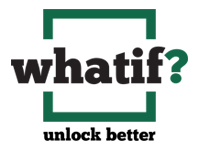
Productivity, Creativity, Connectivity and Trade-offs
Productivity gains have also come at the expense of connectivity. In addition to losing the insights from connecting with our networks, we’ve missed on opportunities to engage as a team and bond with each other in a meaningful way.
f there is one thing that leaders in knowledge work agree on, is how well their organizations adapted to remote work environments. After early technology and connectivity bumps, they were able to get on with getting the job done, and over the past two years have seen an increase in their productivity. Clients tell me they have never been so productive. It is not surprising when you think about it. We got away from the daily commute, along with coffees, lunches, drinks, and dinners with colleagues, clients, advisors, and suppliers. Virtual meetings eliminated moving to different rooms, rides in elevators, or walks to other buildings to attend meetings. One executive put it well, “I’ve never been so productive, and I’ve never been so exhausted.” It is clear this increase in productivity has come at the expense of work/life balance, blurring the lines between our professional and personal lives, with much written on this issue. This imbalance has also been fuel for what is being called “the great resignation” or “great reassessment”. I touched on this in a recent piece, and its building momentum. The people experience of the past is not the people experience of the future. I do not know what the future work model will be, but it will not be what it was.
Increased productivity has also come at the expense of creativity. That coffee meeting with a team member, or impromptu hallway conversation with a colleague, or the dinner with an advisor can ignite sparks of insight and creativity. We have lost these important moments that disrupt our thinking and stoke our curiosity. Innovation is a by-product of disruption. I had a client who was an innovator at heart, and we would get together and have what we called “zero-gravity” discussions. We didn’t let the weight of the status quo weigh us down and we asked a lot of “what if” questions. From one of those discussions came a new and innovative way of approaching his mandate. Not every conversation will create an innovation. It’s the process of tapping into our curiosity, sense of wonder, and unconstrained thinking that fosters new and different perspectives.
Productivity gains have also come at the expense of connectivity. In addition to losing the insights from connecting with our networks, we’ve missed on opportunities to engage as a team and bond with each other in a meaningful way. How do we have career conversations, or micro-coaching and mentoring moments, when we’re connected to a screen 8-10 hours a day? And do we even have the mental and emotional stamina to tee up a formal virtual call to have such a discussion? Some of the best conversations I’ve had with people have been spontaneous where something serendipitous happened.
My sense is we’ve made these trade-offs as happenstance of our circumstance. We didn’t know how the future would unfold or how long the pandemic would last. Being good stewards of performance, we worked hard to make the best of the situation, and two years later we’ve created a new paradigm and developed new habits.
So where to from here? Most of us involved in knowledge work live in major metropolitan areas and no longer have commutes that take the better part of an hour. I live in the Greater Toronto Area and my door-to-door commute, including donning a suit, driving to the train station, taking the train, and walking to the office was at least an hour each way. We seem to have given this time and other whitespace in our day to work and being more productive. That’s roughly 1,000 hours a year. What if we reclaimed this time as our own? How might we use it for creative pursuits? What if, as a leader, we insisted people reclaim this time for themselves? What fresh ideas, new ways of working, and innovation might result? What if we rewarded the products of creative time? Would it lead to increased employee engagement and reduced flight risk? Could we unlock better?
I believe these are questions worth exploring. Somewhere between 100% onsite and 100% virtual is where we will likely land subject to how the pandemic evolves. Leaders will need to determine how much risk they are prepared to take in their positioning.
My hope is we will have meaningful discussion and be conscious of the present – future trade-offs we are prepared to make.
Let me know your thoughts. As always, your feedback and comments are much appreciated.


Leave a Reply